|
|
|
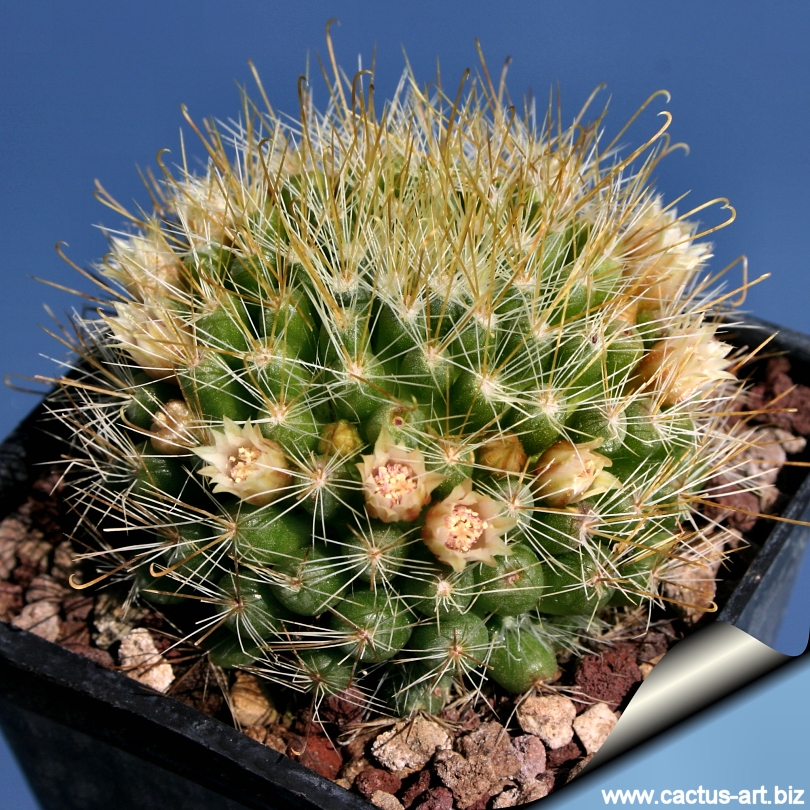
Mammillaria glochidiata var. xiloensis
is a small, pincushiony cluster of egg-shaped
balls, with fine hooklike spines and lovely pink flowers.
|
Description: Plants irregularly forming tightly packed cluster
of egg-shaped balls, up to 5 cm tall (in cultivation it can grow up
to15 cm), 6 cm in diameter.
Stems: Cylindrical,
glossy bright green, rounded apically, 2 - 3.5 cm in diameter.
Without latex.
Tubercles: Flabby, widely separated, cylindrical to conical,
12 - 16 mm long.
Radial spine: 9 - 11, threadlike, flexible, smooth, white,
horizontal, to 12 mm long.
Central spine: 1 - 4, needle-like, lower one hooked, dark
yellow, 6 - 12 mm long.
Flower: Bell shaped, pale cream-pink, to 10-15 mm long and
8-10 mm in diameter.
Bloom season:
Mid Spring through
Mid Summer
Fruit: Club shaped, scarlet, to 16 mm long.
|
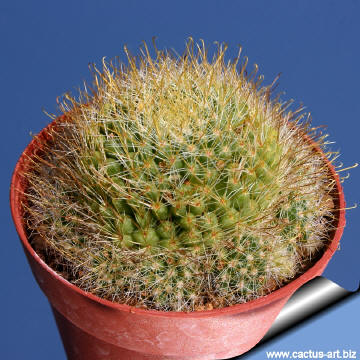 |
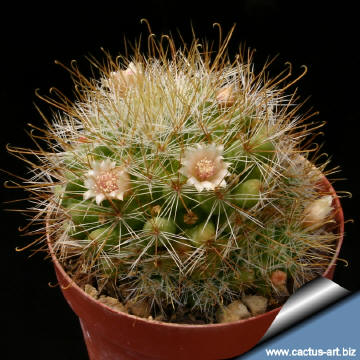 |
|
. |
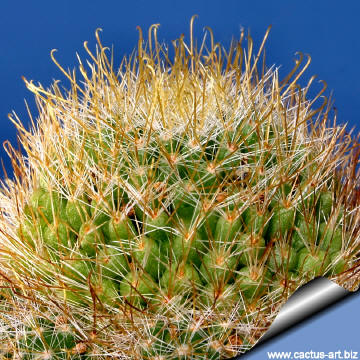 |
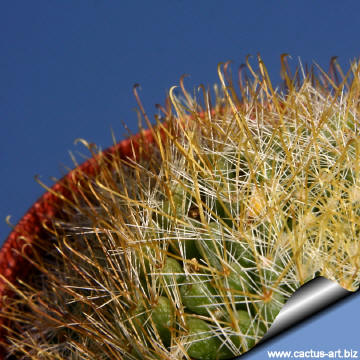 |
|
Advertising
|
|
|
|
|
Family:
Cactaceae (Cactus
Family)
Mammillaria glochidiata
var xiloensis
Accepted
Scientific Name:
Mammillaria
glochidiata
First description:
by Martius, Nov. Act. Nat. Cur. 16: 337, plate 23 (1832)
Conservation status: Listed in
CITES appendix 2.
Origin: Hidalgo,
Mexico. Altitude about 1.300 m.
Synonyms:
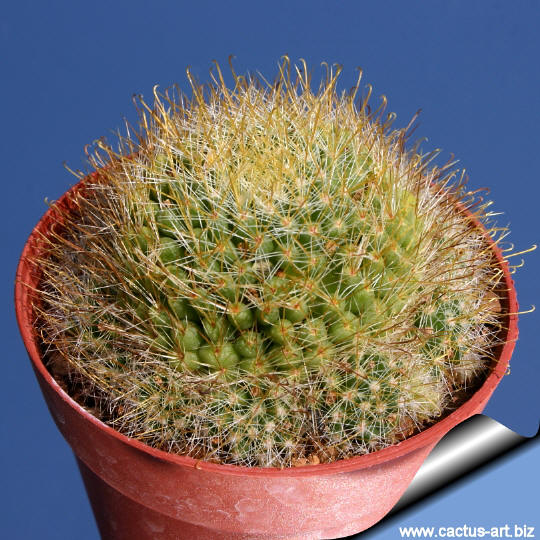
|
|
|
|
Cultivation: It is a slow growing species
of easy culture, recommended for any collection that needs
lots of light with ample airflow. Water regularly in summer, but do
not overwater (very
wet-sensitively, especially in light of its small root system)
Water thoroughly only if soil is dry to
the touch, let soil dry in between to prevent root rot,
keep dry in
winter. Use a very porous
mineral-based potting mix, with excellent drainage, as can be achieved by the addition
of extra perlite
or pumice. Feed with a high potassium
fertilizer in summer.
Care must be taken with watering as
they tends
to become swollen and untidy in growth habit if given too much
water and shade.
Sun Exposure: High levels of light are needed to
flower and for good spine development.
Can be sunburned if moved
from shade/greenhouse into full sun too quickly. During the spring it
may be able to take full sun until the heat arrives at the end of
spring. In an area that has hot afternoon sun, it may be able to take
full morning sun, but requires afternoon shade or afternoon light shade.
If grown correctly, it will reward the grower with generous
displays of flowers.
It is quite frost resistant if
kept dry, hardy as low as -5° C (or less) A resting period in winter and strong light are necessary so that it can
flower properly.
Clustering in cultivation after several years and easily flowered.
For best results, use a shallow pot, and only use the smallest
diameter pot that will accommodate the plant. Sensitive to red
spider mite. Overhead watering is helpful in controlling mites.
Propagation: Direct sow after last frost
(usually) or division, wait
until the
offsets that appear at the
base of old clustered
specimens
are 1/3 the size of the parent and then detach and plant.
Photo of conspecific taxa, varieties, forms and
cultivars of plants belonging to the Mammillaria crinita
complex
(This taxon has lots of synonyms
(like most mammillaria) with several
controversial varieties and subspecies):

 |
|